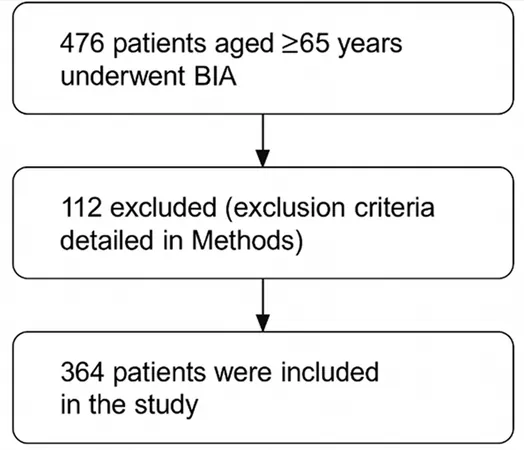
Urgent Alert: Bird Flu Poses Deadly Risks to Your Cat!
2025-01-01
Author: Ming
Introduction
Health officials and veterinarians are sounding the alarm over the shocking risks associated with raw pet foods after a tragic incident in Oregon, where a beloved cat succumbed to bird flu after consuming contaminated turkey-based products. This devastating case prompted Northwest Naturals to issue a recall on specific batches, igniting a widespread concern about the safety of raw pet foods.
Concerns Raised by Experts
Ron Simon, a leading food poisoning attorney in the United States, expressed this rising anxiety, stating, "We are accustomed to outbreaks of salmonella, listeria, and E. coli in pet food, but this situation elevates our concerns to a whole new level. Pet food should be manufactured with the same rigorous standards applied to human food."
First Documented Case of Cat Death
This unfortunate event marks a grim milestone, being the first documented case of an indoor cat, with no direct exposure to poultry or livestock, dying from bird flu after eating commercially available raw food. Subsequent testing confirmed the presence of the same bird flu strain in both the deceased pet and the contaminated food, as reported by various news outlets.
Investigation by FDA
In response to this alarming situation, the Food and Drug Administration (FDA) has launched an investigation into multiple bird flu cases affecting cats in California, Colorado, Oregon, and Washington. Fortunately, no reported human cases have emerged from handling the tainted food or infected animals, but investigators are diligently tracing food sources and analyzing samples from both affected cats and the implicated products.
Escalating Crisis in Los Angeles County
Recent reports from Los Angeles County emphasize the escalating nature of the crisis, with officials confirming bird flu in five domestic cats—four cases connected to recalled raw milk and one linked to Northwest Naturals products. Alarmingly, another incident involving raw milk has led to illness in seven cats, with five fatalities among a group of eight exposed animals.
Impact on Wildlife
The scope of impact extends even further, with a wildlife sanctuary in Washington state witnessing the devastating loss of 20 big cats due to the virus. The mortality rate for cats diagnosed with bird flu is hauntingly high, with approximately 67% facing death, often within just a day of showcasing initial symptoms.
Raw Food Diet Risk
The primary threat seems to center around cats consuming raw food products—despite this diet representing a mere 2% of the overall pet food market. Unlike traditional pet foods that undergo heat processing and pasteurization to kill harmful pathogens, raw diets remain a risky choice. Moreover, some pet owners, believing freeze-dried raw options to be safer, may be unaware that this method preserves viruses rather than eliminates them, as researchers frequently utilize freeze-dried samples for virus studies.
Signs of Infection
Cat owners need to remain vigilant for signs of infection. Early warning signs can include: - Coughing and sneezing - Loss of appetite - Lethargy - Fever - Profound depression - Runny nose - Eye discharge
Progression of Symptoms
As the disease progresses, neurological symptoms may manifest, including stumbling, coordination issues, seizures, or blindness. Detection can be particularly challenging, as cats often hide their ailments until severely ill, complicating timely intervention.
Rising Cases in the U.S.
The trajectory of bird flu's impact on American cats has been alarming. While no cases were recorded in the U.S. until 2022, by late 2024, over 25 cases had been identified. The majority of early instances were reported among cats on dairy farms in Texas and Colorado, with some indoor cats without known exposure also falling victim.
FDA's Response
The FDA has responded by cautioning pet owners against feeding raw food that may originate from infected farms. For those unsure of their pet food sources, officials recommend thoroughly cooking or pasteurizing food to neutralize potential viruses. Additionally, veterinarians suggest several precautions: - Keep cats indoors whenever possible - Remove bird feeders to minimize contact with potentially infected wild birds - Seek veterinary care immediately if symptoms appear - Consider switching to traditionally processed pet foods for enhanced safety
Treatment and Ongoing Research
Treatment for infected cats mainly involves supportive care: maintaining hydration and encouraging food intake. Veterinary researchers continue to investigate the full scope of the disease in felines, including the possibility that some may exhibit only mild symptoms or carry the virus without visible signs.
Conclusion
This outbreak has drawn comparisons to cats' experiences with COVID-19, although with starkly different outcomes; while some cats showed no symptoms during COVID-19 infections, the severe lethality of bird flu cannot be understated.
The distressing case in Oregon serves as a crucial wake-up call regarding the dangers of raw pet food diets, leading to heightened scrutiny of manufacturing processes and safety protocols across the industry. As more information emerges on the spread and implications of bird flu in cats, both pet owners and veterinarians face critical decisions about balancing dietary preferences with potential safety risks. Remember—your furry friend's safety could depend on it!



 Brasil (PT)
Brasil (PT)
 Canada (EN)
Canada (EN)
 Chile (ES)
Chile (ES)
 Česko (CS)
Česko (CS)
 대한민국 (KO)
대한민국 (KO)
 España (ES)
España (ES)
 France (FR)
France (FR)
 Hong Kong (EN)
Hong Kong (EN)
 Italia (IT)
Italia (IT)
 日本 (JA)
日本 (JA)
 Magyarország (HU)
Magyarország (HU)
 Norge (NO)
Norge (NO)
 Polska (PL)
Polska (PL)
 Schweiz (DE)
Schweiz (DE)
 Singapore (EN)
Singapore (EN)
 Sverige (SV)
Sverige (SV)
 Suomi (FI)
Suomi (FI)
 Türkiye (TR)
Türkiye (TR)
 الإمارات العربية المتحدة (AR)
الإمارات العربية المتحدة (AR)